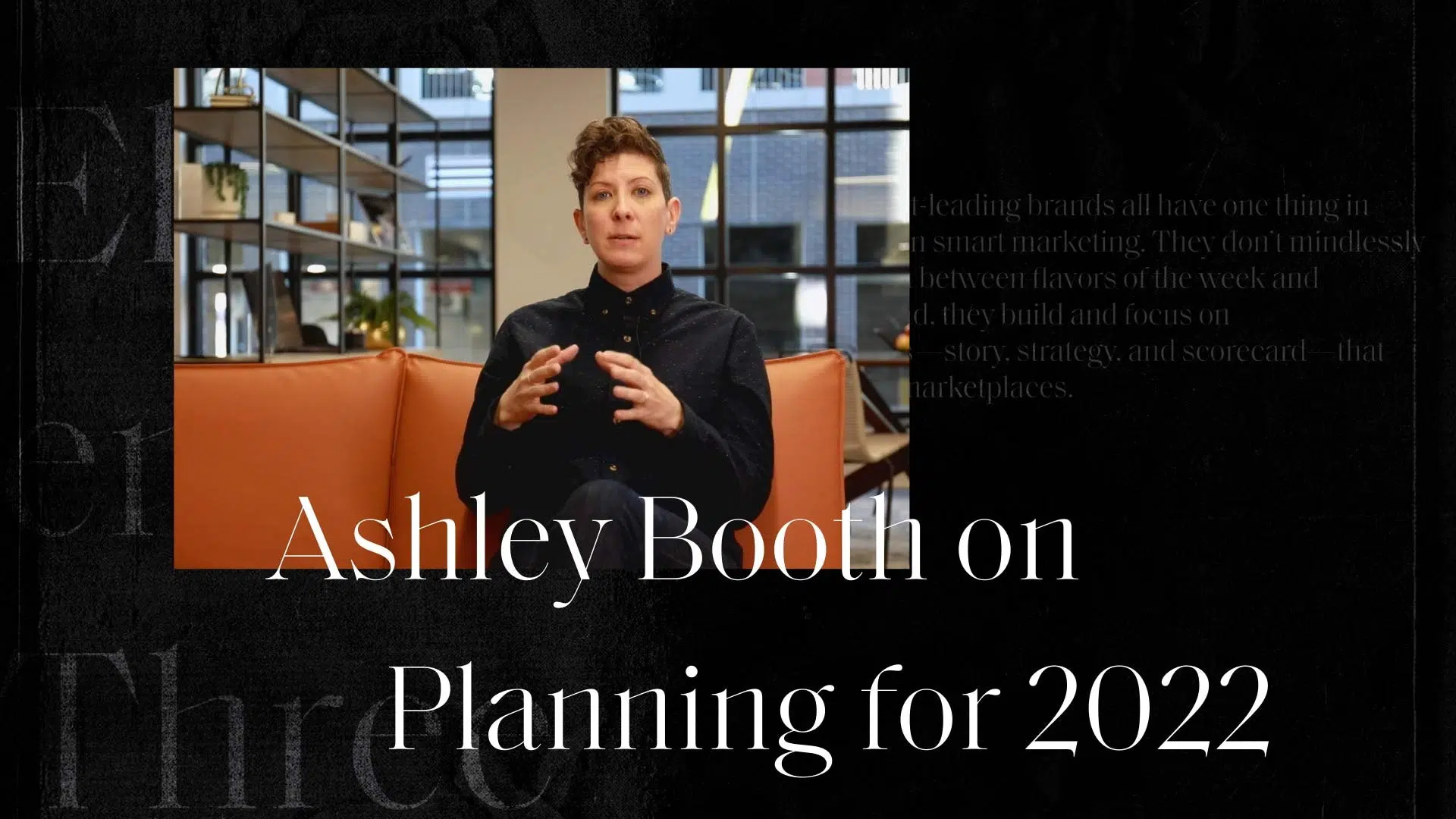If you do any research at all as a part of your annual planning process, you’re going to see a lot of people trying to determine what the “next big thing” in marketing is. And that’s fine—it’s important for you to keep up with what’s new in your industry and your market, and what’s new in marketing generally. But there is no silver bullet, no perfect tactic that’s going to work for everyone.
Instead, what you need to do is take a step back—assess where your business is, and determine where you want it to go, not just next year, but beyond. In this video, Consulting Director Ashley Booth explains how.
Annual planning isn’t just about next year
It may seem counter-intuitive, but annual planning needs to go beyond 2022. Shorter-term thinking—even a year ahead—can lead to more emphasis on tactics than strategy, and what you really need to do is figure out how to take your business where you want it going in the longer term.
Set out space for an in-depth strategy session; when we do this at Element Three, it’s usually about half a day. Get out of the tactics and channels and think about your business’ bigger picture issues. Are you unhappy with your brand? Unsure about the right audiences to target? Are you ready to launch a new product or expand into a new market? Make these decisions first. Then determine what needs to happen over the next three years to solve these issues.
Everything you do needs to ladder up to where you want to go, and that journey shouldn’t happen in one-year fits and starts. Planning in three-year increments will get you farther, and you’ll take a smarter path to get there.
And remember: not every part of this is going to be sexy. There’s a lot of behind-the-scenes stuff like your tech stack and your CRM, analytics and attribution, that will help take you to the next level. Don’t neglect the foundations in favor of a cool new paint job.
Who’s going to do the work, and how?
As you’re doing your three-year planning, two of the most important considerations are budget and personnel. No strategy, no matter how smart, is going to bear fruit if the right people aren’t on the job, or if they lack the resources to do it right.
But just knowing the numbers isn’t enough. Let’s say you have a marketing budget of $500k. What does that mean, exactly? Is it just for media spend and partner fees? Does it include technology costs? Personnel and payroll? What actual working dollars do you have available, and how can you make the most of them?
The same goes for your people. You might have no marketing team available at all; you might have a cast of 30 marketing professionals. Who’s available to help, and what are they uniquely qualified to do? What gaps exist, and how can they be filled? The smaller your team, the more likely it is that you’ll have those gaps, of course, but don’t assume just because you have a larger team that can’t still mean you need to look into augmenting them.
At this point you should have a pretty good idea of what needs to get done. The main question to answer is: do you have the team and resources needed to do it? And if not, can you get them, or do you need to set less aggressive goals?
Can getting an outside perspective help?
The short answer is “usually, yes.” You might not feel like it’s time for your business to take the plunge and hire a full-time consultant, but that doesn’t mean you can’t seek outside help.
Talk to people. Talk to your peers, the other business leaders you interact with. See what they’re dealing with and how they’re seeing the business and marketing landscapes, and how that compares to what you’re experiencing. Talk to people within your business who don’t handle marketing. Learn what they’re experiencing on a daily basis, so your strategy can be more easily grounded in the needs of the business as a whole, not just what marketing wants to do.
And, of course, especially if your business is at or near a growth tipping point, that full-time consultant might actually be the best way forward. It requires an investment, but the return on that investment can be huge.
Your future is about more than the next 12 months
Trying to turn “annual planning” into a three-year cycle may seem daunting, but it allows you to ensure that everything you do this year leads to consistent success going forward—not disjointed year-by-year stops and starts. Don’t put on your blinders and focus only on the coming year, but also don’t allow yourself to get overwhelmed. Think about your business’ big picture, the place you want to be several years down the road. Pick around three major goals that you want to achieve, and map out how to get from where you are now to achieving those goals. And devote 2022 to taking the smartest steps you can towards your ideal future.




